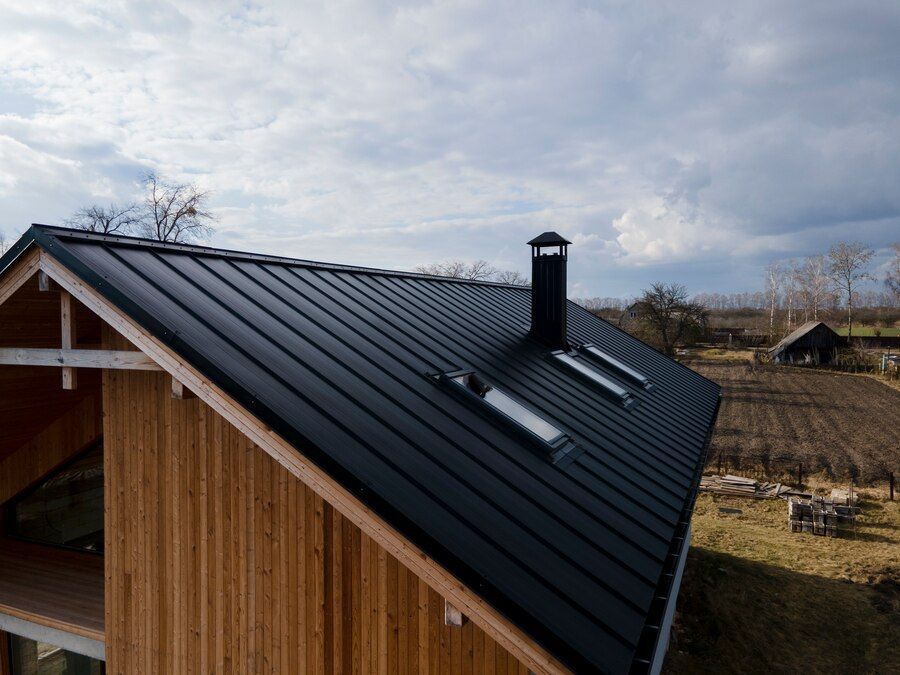How to Choose the Best Roofing Type for Your Home

Choosing the right roofing type for your home is a big decision. Your roof is more than just a covering; it protects your home from the elements and contributes to its overall look. With so many options available, it can feel overwhelming to make the best choice. But by considering a few key factors, you can find the perfect roofing material for your needs.
First, think about your local climate. Different roofing materials work better in different weather conditions. Some materials handle extreme temperatures, heavy rain, or strong winds better than others. Knowing what to look for can help ensure your roof will perform well under the conditions it will face.
Next, consider the durability and lifespan of the roofing materials. You'll want something that can last a long time without needing frequent repairs. Different materials have different maintenance needs and costs, so think about what you’re willing to invest in upkeep. By comparing these factors, you can choose a roof that offers the best value over its lifespan.
Another important factor is the aesthetic appeal. Your roof should complement your home's style and appearance. With a variety of colors and designs available, you can choose something that boosts your home’s curb appeal. In addition, think about the budget and costs involved. Some materials might have higher upfront costs but lower long-term maintenance costs.
In this article, we’ll guide you through these important factors to help you choose the best roofing type for your home. Let’s get started!
Consider Your Climate
When picking a roofing type, your local climate plays a major role. Different materials handle weather conditions in various ways. For example, asphalt shingles are popular because they perform well in most climates. They're good for areas with moderate temperatures and occasional rain. However, if you live in a place with extreme weather, like heavy snowfall or intense heat, you might need something more durable.
Metal roofs are excellent for regions with heavy snowfall because they allow snow to slide off easily. They also reflect heat well, making them a good choice for hot climates. On the other hand, clay and Spanish tiles are suitable for areas with mild winters and hot summers because they provide good insulation against heat.
Performance in extreme conditions is a key consideration too. Storm-prone areas require roofing that can withstand strong winds and heavy rain. Materials like metal or slate are highly durable and can offer better protection in such environments. In contrast, cedar shake roofs provide natural insulation but may not be ideal for regions with high humidity or risk of wildfire. Each roofing type has its strengths, so understanding your local weather patterns is essential for making the best choice.
Evaluate Durability and Lifespan
Durability and lifespan are crucial factors when choosing a roofing material. You want a roof that will last for many years without frequent repairs. Asphalt shingles typically have a lifespan of about 20 to 30 years, making them a reliable and cost-effective option. Metal roofs can last between 40 to 70 years, providing a durable solution that requires less maintenance over time.
Comparing the lifespan of different materials helps you understand their long-term value. Slate roofs are among the longest-lasting, with some lasting over 100 years if properly maintained. Cedar shake roofs also offer a good lifespan but may need more care to stay in good condition, especially in damp climates.
Maintenance needs and costs are another important consideration. Asphalt shingles are easy to replace and repair, keeping maintenance costs low. Metal roofs, while initially expensive, require minimal upkeep, saving money in the long run. Cedar shake and tile roofs may need regular cleaning and treatments to prevent mold or weather damage.
By evaluating these factors, you can choose a roofing material that fits your needs and budget while providing the durability and lifespan you expect.
Assess Aesthetic Appeal
Choosing a roofing type isn’t just about function; it’s also about how your home looks. Your roof should match the architectural style of your house. For example, asphalt shingles are versatile and can fit many styles, from modern to traditional homes. They come in various colors, so you can pick one that enhances your home's exterior.
Cedar shake roofs add a charming, rustic look, making them a great match for cottages, log cabins, and country-style homes. The natural wood tones blend well with the environment and provide unique curb appeal. On the other hand, Spanish tile roofs offer a classic and elegant look, making them ideal for Mediterranean or Spanish-style homes.
Consider the range of colors and design options available for each roofing type. Metal roofs can be found in different shapes and colors, offering a sleek and modern appearance. Slate roofing provides a timeless and sophisticated look, with natural stone colors that never go out of style. Matching your roof to your home’s architecture and selecting the right color can significantly improve your home’s overall appearance.
Budget and Cost Analysis
When choosing a roofing type, it's vital to consider both the upfront costs and the long-term investment. Different materials come with different price tags. Asphalt shingles are usually the most affordable option, with lower upfront costs and relatively low installation fees. This makes them a popular choice for homeowners on a budget.
However, it's important to look beyond the initial price. Some roofing materials, like metal or slate, might have higher upfront costs but offer better durability and lower maintenance expenses over time. These options can save you money in the long run due to their longevity and minimal maintenance needs.
Identifying quality materials within your budget involves comparing the costs and benefits of each option. For instance, cedar shake roofs are more expensive upfront and need more maintenance, but they provide excellent insulation and last a long time. Spanish tiles also have a higher initial cost but offer great durability and a unique look that adds value to your home. Balancing these factors helps you make a smart choice that fits your financial situation.
Conclusion
Choosing the best roofing type for your home involves careful consideration of various factors. By understanding how different materials perform in your climate, their durability, and their aesthetic appeal, you can make an informed decision. Evaluate the upfront costs and long-term investment to find a roofing type that not only enhances the beauty of your home but also fits your budget.
Regular maintenance and proper installation are key to maximizing the lifespan and performance of your roof. Each roofing material has its strengths, so identify what matters most to you—whether it’s low maintenance, longevity, or style. Taking these factors into account ensures that you select a roofing type that meets your specific needs.
If you need professional advice or help with your
roofing project, contact Asch Roofing. Our experts specialize in a wide range of roofing materials and can guide you through the entire process. Schedule a consultation today, and let us help you find the perfect roof for your home!


